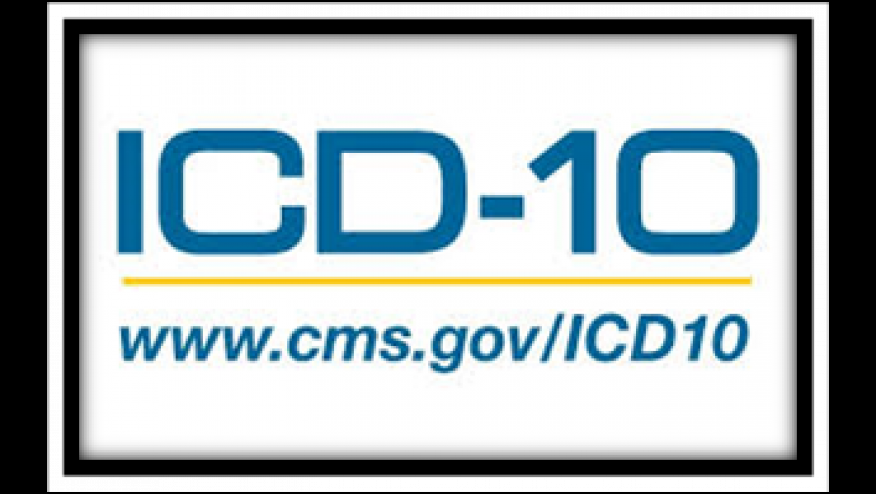ICD-10 Headlines Save

Nearly 2 weeks have passed since the painful launch of ICD-10 in US medical practices.
More articles on this subject have been published, attempting to allay fears, ease transition and explain the chaos that has accompanied the introduction of ICD-10. Here are some of the takeaway highlights, justifications and well-honed governent speak:
Lancet (free open text), Volume 386, No. 10002, p1420, 10 October 2015 Citation source: http://buff.ly/1ZxgwGl
- ICD-9 has been in use in the USA since 1979 - ICD-10 has been introduced worldwide in 1992 - The new version increases diagnostic codes from 14 000 to 68 000 and will enable coding to describe the circumstances of injury, and includes almost all conceivable and unusual injuries such as: problems in relationships with in-laws; struck by an orca, initial encounter; and prolonged stay in weightless environment. The AMA estimates this cost will be around $86000 for the smallest practice, to a range of $2–8000000 for a large practice. The next, ICD-11, is due in 2018.
Annals of Internal Medicine 2015;163(7):554-556. Citation source http://buff.ly/1QmB1zn
This article attempts to outline the implications of moving to ICD-10 and recommends resources to facilitate the transition.
- "The ICD-9-CM codes, however, do not provide sufficient specificity regarding patients' conditions, diagnostic evaluation, and treatment. Implementation of ICD-10 aims to improve on ICD-9-CM by capturing information about the increasingly complex delivery of health care. It provides increased specificity in its code sets. To accomplish this, however, comparably specific clinical documentation is critical. Under ICD-10, therefore, clinicians will need to provide more precise, rather than a higher volume of, clinical documentation."

- Anatomy of the ICD-10 code: "Alphanumeric characters indicate specific categories (for example, suppurative and unspecified otitis media: category = H66), subcategories (for example, acute with spontaneous rupture of ear drum: subcategory = .01), laterality (for example, right ear: laterality = 1), and codes (for example, acute suppurative otitis media with spontaneous rupture of ear drum, right ear: code = H66.011). An ICD-10 code starts with a letter (any letter except “U”); the second character is a number; and the third through seventh characters can be letters or numbers. All categories are coded as 3 characters before a decimal point. If more specificity is needed, a subcategory follows the decimal point. Subcategories are indicated by 4 or 5 characters."
Annals of Internal Medicine 2015; 163 (7): 557-558
- Scott Manaker, MD from the University of Pennsylvania writes in support and the utility of code revision by stating, "Physicians passionately care about making the right diagnosis for their patients. The right diagnosis leads to the proper advice and treatment. Diagnostic concordance among physicians allows for care coordination, patient aggregation into study groups for clinical trials, and assessments of population health. So development of a standardized nomenclature for diagnoses represents an essential step along the way. A standardized nomenclature would facilitate communication among treating physicians, improve homogeneity of clinical trial populations, and ease international assessment of health trends and disease burdens.
- Most (87%) of the individual ICD-10 codes correspond to a single ICD-9 code (3). Conversion choices from an ICD-9 diagnosis code to an ICD-10 one can be identified online or in a printed index, and generalized equivalency mappings allow easy conversion back and forth between both revisions."
- "The per capita cost-measures component of the value-based modifier now being applied in 2015 to traditional fee-for-service payments to large provider groups is risk-adjusted, based on incorporating the diagnoses historically reported on claims from 2013 into the risk-adjustment methodology for hierarchical condition categories from the Centers for Medicare & Medicaid Services (9). This methodology also applies to federal payments to Medicare Advantage plans. Because those payments fund their physician fee schedules, Medicare Advantage plans often require participating physicians to report or attest to clinically appropriate, supplemental diagnoses that increase the plan payments or reward physicians for doing so."







If you are a health practitioner, you may Login/Register to comment.
Due to the nature of these comment forums, only health practitioners are allowed to comment at this time.